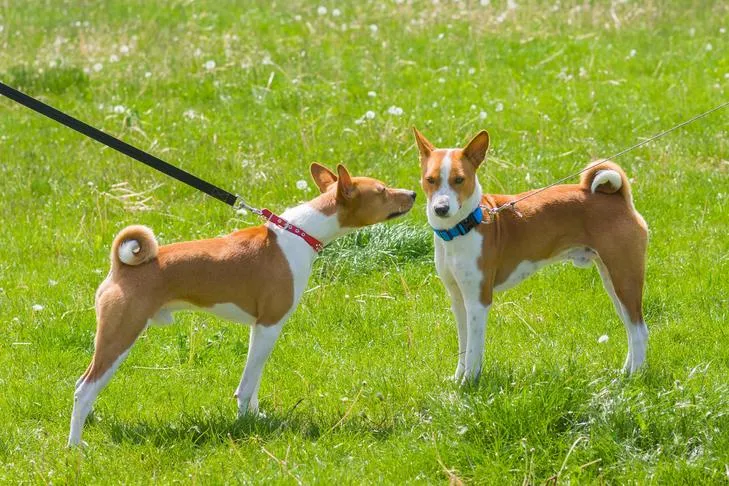Walking your dog should be an enjoyable experience for both of you, but a dog that constantly pulls on the leash can turn a pleasant stroll into a frustrating struggle. It’s not just annoying; it can be unsafe, potentially leading to injuries for you or your dog, and even putting your dog at risk if they manage to escape. Nobody wants to be dragged down the street, especially with larger, stronger breeds. Fortunately, leash pulling is a common issue that can be effectively addressed with consistent training and the right techniques.
Many dog owners find themselves asking, “How To Train A Dog To Stop Leash Pulling” to regain control and enjoy walks together. By understanding the underlying reasons for this behavior and implementing positive reinforcement methods, you can teach your dog to walk politely by your side. This guide will provide ten effective tips to help you transform your pulling pup into a well-behaved walking companion. With patience and consistency, you and your furry friend will soon be enjoying harmonious walks, strengthening your bond, and ensuring a safer outing for everyone. If you’re looking for advanced training, you might consider how to train your dog to be a service dog.
1. Always Reward Good Leash Behavior
Positive reinforcement is a cornerstone of effective dog training, and teaching your dog to walk politely on a leash is no exception. Never take your dog’s good behavior for granted. Dogs are more likely to repeat actions that result in a positive outcome, whether that’s a tasty treat, enthusiastic praise, or even a chance to investigate an interesting scent. If you only react when your dog pulls or misbehaves, they may learn that pulling is the most effective way to get your attention or achieve their desired outcome.
Always carry high-value treats and be ready to offer praise and affection whenever your dog walks with a loose leash. In the initial stages, reward frequently and generously to solidify the desired behavior. As your dog’s understanding improves, you can gradually reduce the reliance on treats and incorporate “life rewards” like the opportunity to sniff a bush or greet another dog (if appropriate and safe) as reinforcement. This teaches them that polite walking directly leads to enjoyable experiences.
2. Never Allow Your Dog to Progress While Pulling
One of the most crucial principles in teaching your dog not to pull is to ensure that pulling never achieves its goal. Dogs pull because they want to get somewhere – to sniff something, to meet another dog, or simply to move faster. If you allow them to continue walking while they are pulling, you are inadvertently rewarding the very behavior you want to eliminate.
The moment your dog applies tension to the leash, stop immediately. Plant your feet firmly and become a “tree.” Do not move forward until the leash slackens. Your dog may be confused at first, but they will eventually realize that pulling brings the walk to a halt. This simple, consistent action teaches your dog that pulling is counterproductive to continuing the walk.
3. Wait for a Loose Leash Before Resuming Movement
Once you’ve stopped, the question becomes: when can you start walking again? The key is to wait for the leash to go slack and for your dog to shift their attention back to you. The leash should hang loosely, forming a “J” shape. Your dog might look back at you, sit, or simply relax the tension. This moment of disengagement from pulling is your cue.
When the leash is loose and your dog looks at you, offer immediate praise and a treat right at your side, then calmly resume walking. Initially, you might find yourself stopping and starting every few steps. This is normal. With consistent repetition, your dog will quickly learn that a loose leash and attention to you are the only ways to keep the walk moving forward. This technique is fundamental for effective canine behavior training near me.
 Basenjis meeting in a field outdoors, one on leash.
Basenjis meeting in a field outdoors, one on leash.
4. Integrate Life Rewards into Your Walks
Walks offer much more than just a bathroom break; they are vital for your dog’s physical exercise and mental stimulation. You can enhance your training and enrich your dog’s experience by strategically incorporating “life rewards.” These are the everyday pleasures your dog enjoys, such as sniffing a particular shrub, investigating a new smell, or briefly greeting a familiar person.
Use these desired activities as rewards for good leash manners. For example, if your dog walks with a loose leash for a set distance (say, 10 feet), release them with a cheerful “Go sniff!” command to enjoy a few minutes of exploration. This reinforces the idea that polite walking leads to highly desirable outcomes, making the training more rewarding and engaging for your dog. For puppies, understanding how to train your puppy to be a service dog can also involve incorporating various positive experiences into their learning.
5. Maintain a Brisk and Engaging Pace
Often, humans walk at a much slower pace than is natural or comfortable for most dogs. Even small toy breeds can feel the urge to move faster than their owners. This mismatch in pace is a common reason why dogs start to pull – they want to get to their destination more quickly.
To help your dog feel more invested in the walk and reduce the urge to pull, try to maintain a brisk, comfortable pace for both of you. While you can certainly teach your dog to match your slower speed over time, a quicker, more purposeful walk can make it easier for them to learn not to pull, as it satisfies their natural desire to move. An engaging pace keeps them focused and less likely to become bored and pull.
6. Be Absolutely Consistent with Your No-Pulling Rule
Consistency is paramount in dog training. It can be incredibly tempting to let your dog pull when you’re in a hurry, it’s raining, or you just want to get to the dog park quickly. However, every single time you allow your dog to pull, you are reinforcing that behavior and setting your training back significantly. Dogs learn through association, and inconsistency teaches them that pulling sometimes works.
Commit to your no-pulling rule regardless of the circumstances. If you’re short on time, opt for a quick potty break in the yard instead of a training walk. Until your dog consistently walks on a loose leash for a significant distance, prioritize the training over covering ground. This unwavering consistency will make your dog understand that pulling never yields positive results.
 Beagle pulling on the leash to sniff while on a walk outdoors.
Beagle pulling on the leash to sniff while on a walk outdoors.
7. Keep Training Sessions Short and Enjoyable
Training a determined leash puller can be frustrating, especially in the beginning when progress might feel painfully slow. It’s easy for both you and your dog to get discouraged if sessions are too long or become unpleasant. Remember, the goal isn’t to cover a certain distance, but to achieve loose-leash walking, even if it’s just for a few steps.
Keep your training sessions brief, positive, and fun. For puppies, attention spans are particularly short, so aim for 5-10 minute sessions a few times a day. End each session on a high note, even if it means finishing after just one successful loose-leash step. This approach prevents both of you from getting “cranky” and ensures that training remains a positive experience, encouraging your dog’s willingness to learn.
8. Be Interesting and Engaging During Walks
The world is a fascinating place for dogs, filled with an irresistible array of sights, sounds, and, most importantly, smells. These external stimuli constantly compete for your dog’s attention and can easily entice them to pull. If you are disengaged, perhaps on your phone, your dog has little incentive to focus on you.
To counteract distractions, you need to become the most interesting thing on the walk. Talk to your dog, offer unexpected treats, suddenly change direction, or pause for a quick game of “find it.” By being unpredictable and engaging, you encourage your dog to pay attention to you, wondering what exciting thing you’ll do next. This helps them stay focused and less likely to be pulled off course by environmental stimuli.
9. Maintain Your Calm Demeanor
Walks can present a variety of emotional situations, from encountering an overly excited dog to passing a person that makes your dog nervous. Dogs are incredibly perceptive and excel at reading human emotions. Your mood can easily transmit down the leash to your dog, either ramping up their excitement or intensifying their anxiety.
To help your dog remain calm and focused, it’s crucial for you to stay calm, regardless of the situation. Take a deep breath, keep your voice even, and project a sense of confidence and control. If you encounter a situation that typically triggers pulling or anxiety, your calm demeanor can reassure your dog that there’s nothing to worry about. A relaxed dog is far more likely to listen and respond appropriately to your cues. It’s also vital when learning how to stop dog barking at nothing, as your calm reaction helps manage their response.
10. Engage Your Dog in Distracting Situations
Distractions like other dogs, squirrels, or even unfamiliar people can easily cause your dog to forget their leash manners. They might pull furiously to get closer to something exciting or to flee from something perceived as threatening. In these moments, all the training can seem to vanish.
To combat this, proactively engage your dog before they become overwhelmed by a distraction. As soon as you spot a potential distraction, get your dog’s attention by calmly offering treats or initiating a simple command they know well, like “sit” or a hand target. These familiar exercises help redirect their focus back to you. You can also teach a “watch me” cue, training your dog to make eye contact with you on command, which gives you control over where they are looking. The goal is to grab their attention before the distraction becomes too intense, helping them maintain their focus and good leash behavior.
 Cavalier King Charles Spaniel on a lead outdoors.
Cavalier King Charles Spaniel on a lead outdoors.
Successfully teaching your dog to stop leash pulling requires patience, consistency, and a positive approach. By implementing these ten tips, you can transform frustrating walks into enjoyable adventures for both you and your canine companion. Remember to celebrate small victories, stay calm, and always be the most interesting thing on the walk. With dedication, you’ll soon achieve the harmonious loose-leash walking experience you both deserve.
